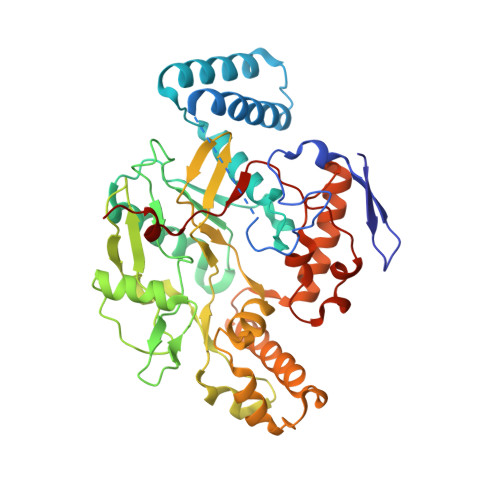2-Aminopyridines with a Truncated Side Chain to Improve Human Neuronal Nitric Oxide Synthase Inhibitory Potency and Selectivity.
Kang, S., Li, H., Tang, W., Martasek, P., Roman, L.J., Poulos, T.L., Silverman, R.B.(2015) J Med Chem 58: 5548
- PubMed: 26120733
- DOI: https://doi.org/10.1021/acs.jmedchem.5b00573
- Primary Citation of Related Structures:
4UGZ, 4UH0, 4UH1, 4UH2, 4UH3, 4UH4, 4UH5, 4UH6, 4UH7, 4UH8, 4UH9, 4UHA - PubMed Abstract:
We have analyzed a recently obtained crystal structure of human neuronal nitric oxide synthase (nNOS) and then designed and synthesized several 2-aminopyridine derivatives containing a truncated side chain to avoid the hydrophobic pocket that differentiates human and rat nNOS in an attempt to explore alternative binding poses along the substrate access channel of human nNOS. Introduction of an N-methylethane-1,2-diamine side chain and conformational constraints such as benzonitrile and pyridine as the middle aromatic linker were sufficient to increase human and rat nNOS binding affinity and inducible and endothelial NOS selectivity. We found that 14b is a potent inhibitor; the binding modes with human and rat nNOS are unexpected, inducing side chain rotamer changes in Gln478 (rat) at the top of the active site. Compound 19c exhibits Ki values of 24 and 55 nM for rat and human nNOS, respectively, with 153-fold iNOS and 1040-fold eNOS selectivity. 19c has 18% oral bioavailability.
Organizational Affiliation:
?Department of Chemistry, Department of Molecular Biosciences, Chemistry of Life Processes Institute, Center for Molecular Innovation and Drug Discovery, Northwestern University, 2145 Sheridan Road, Evanston, Illinois 60208-3113, United States.





















